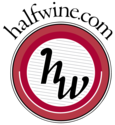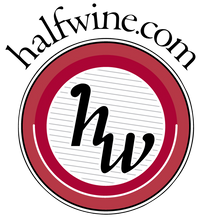Red
Bordeaux
Bordeaux Blend
Cork
Medium Body
Integrated Oak
ABV 14%
Tasting notes
A deep, garnet red colour with aromas of ripe black fruits alongside more savoury, smoky, herbaceous and okay notes that are also found on the palate which is round with a good structure and mature tannins. Ideal with rich stews, grilled meats and hard cheeses.
Why we recommend this wine
The right bank appellation of Pomerol is home to some of the most expensive wines in the world so one has to go to its satellite villages to find affordable wines with hints of the main village wines. This is a good example of what you will find.
The wine
The cuvée for Château Les Hauts Conseillants is composed of 90% Merlot and 10% Cabernet Franc, but, as always, this varies a bit from vintage to vintage. The wine undergoes traditional vinfication, each plot is vinified separately, there is manual pumping over and a maceration of one month. After alcoholic fermentation the wine is aged for 15 months in fine-grained French oak barrels (1/3 new, 1/3 one year old and 1/3 two year old) with 1 or 2 rackings per year.
The domaine has 10 hectares of vineyards in two distinct parcels of vines. 6 hectares of vineyards are situated on sandy-clayey soil with gravelly subsoil, on the Chevrol plateau in Neac and 4 hectares are on a gravelly outcrop with 10% clay in Lalande.
The wine estate
Château Les Hauts Conseillants is owned by the négociant firm Jean-Baptiste AUDY, a family-run company with century-old cellars on the Quai du Priourat located on the banks of the Dordogne river that contain several million bottles of wine. The Figeac-Bourotte family who also own Château Bonalgue and Clos du Clocher in Pomerol and Château du Courlat in Lussac-Saint-Emilion.
jbaudy.fr
Food and wine
Being Merlot dominated the wine has good fruit and tannins and so will accompany game, fowl, lamb and beef dishes and sharp hard cheeses. Also see our guide to pairing food and wine here.
Did you know?
Wine trading began in Bordeaux around the 11th century with the development of business between Bordeaux and England. At the time, practically all of the wines were bought in bulk at the estate then aged in the cellars owned by the négociants who were then in charge of selling them. Today there are about 300 trading houses or maisons de négoce who still play a very significant role.
A deep, garnet red colour with aromas of ripe black fruits alongside more savoury, smoky, herbaceous and okay notes that are also found on the palate which is round with a good structure and mature tannins. Ideal with rich stews, grilled meats and hard cheeses.
Why we recommend this wine
The right bank appellation of Pomerol is home to some of the most expensive wines in the world so one has to go to its satellite villages to find affordable wines with hints of the main village wines. This is a good example of what you will find.
The wine
The cuvée for Château Les Hauts Conseillants is composed of 90% Merlot and 10% Cabernet Franc, but, as always, this varies a bit from vintage to vintage. The wine undergoes traditional vinfication, each plot is vinified separately, there is manual pumping over and a maceration of one month. After alcoholic fermentation the wine is aged for 15 months in fine-grained French oak barrels (1/3 new, 1/3 one year old and 1/3 two year old) with 1 or 2 rackings per year.
The domaine has 10 hectares of vineyards in two distinct parcels of vines. 6 hectares of vineyards are situated on sandy-clayey soil with gravelly subsoil, on the Chevrol plateau in Neac and 4 hectares are on a gravelly outcrop with 10% clay in Lalande.
The wine estate
Château Les Hauts Conseillants is owned by the négociant firm Jean-Baptiste AUDY, a family-run company with century-old cellars on the Quai du Priourat located on the banks of the Dordogne river that contain several million bottles of wine. The Figeac-Bourotte family who also own Château Bonalgue and Clos du Clocher in Pomerol and Château du Courlat in Lussac-Saint-Emilion.
jbaudy.fr
Food and wine
Being Merlot dominated the wine has good fruit and tannins and so will accompany game, fowl, lamb and beef dishes and sharp hard cheeses. Also see our guide to pairing food and wine here.
Did you know?
Wine trading began in Bordeaux around the 11th century with the development of business between Bordeaux and England. At the time, practically all of the wines were bought in bulk at the estate then aged in the cellars owned by the négociants who were then in charge of selling them. Today there are about 300 trading houses or maisons de négoce who still play a very significant role.




